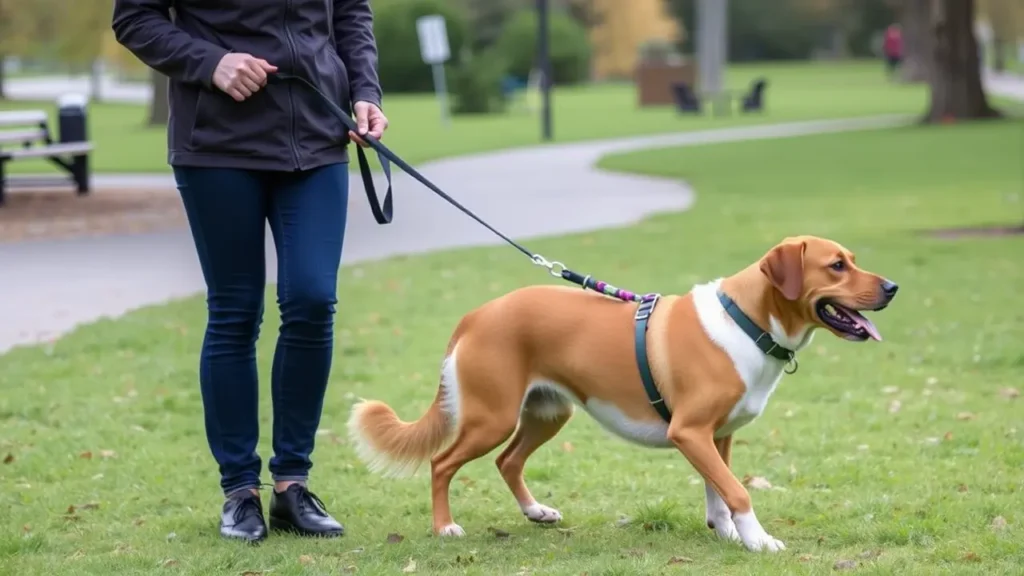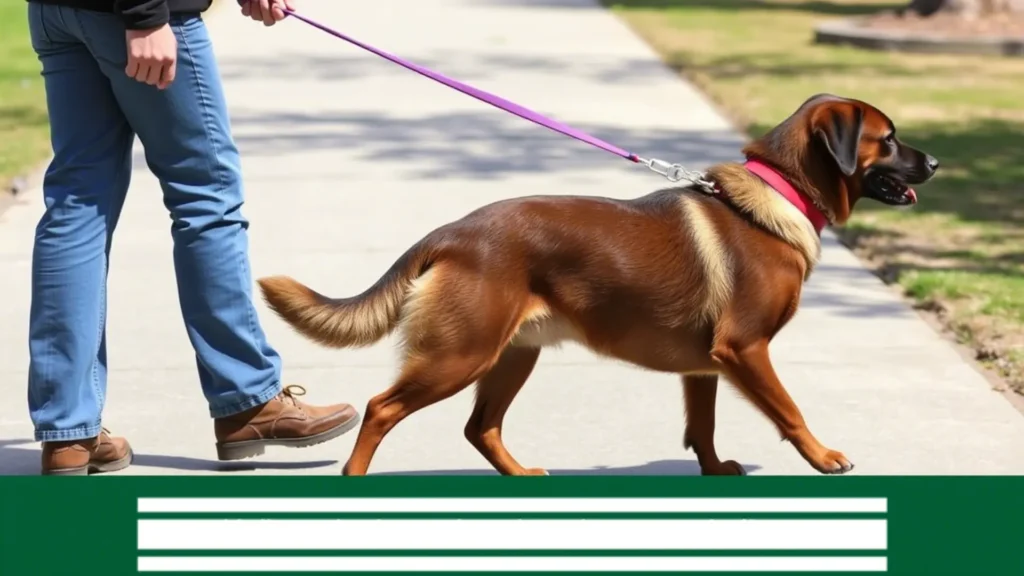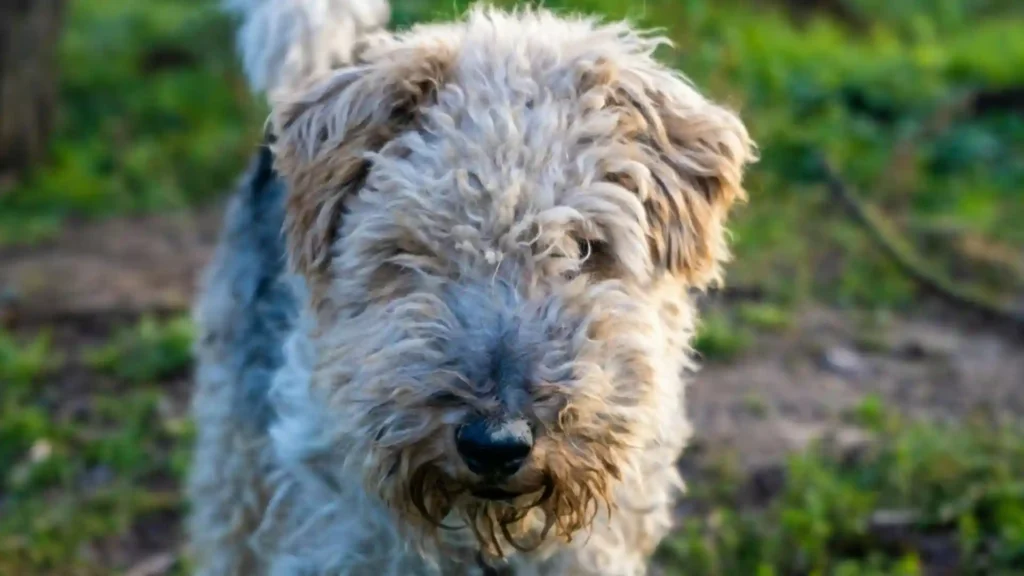Teaching your dog to heel enables you to maintain control and safety during walks. When a dog heels, they walk calmly by your side. The dog matches your pace without pulling, lunging, and wandering. This skill is invaluable for urban environments, and crowded parks.
Benefits of Teaching Your Dog to Heel
The advantages of teaching your dog to heel extend beyond a pleasant walk. Common benefits include:
Enhanced Safety: A dog that heels remains close to you. This significantly reducing the risk of them running into traffic, encountering aggressive animals, and stumbling upon broken glass or toxic substances.
Improved Control in Challenging Environments: Heeling ensures your dog stays focused and responsive in busy sidewalks, dog parks, and bustling outdoor markets. This control makes walks manageable and less stressful.
Strengthened Bond: Training your dog to heel involves clear communication and mutual trust. The process fosters a deeper connection, as your dog learns to rely on your guidance and you reward their efforts.
Social Acceptance and Etiquette: A dog that walks politely by your side is more likely to be welcomed in public spaces. This opens up opportunities for socialization and shared experiences.
Mental and Physical Stimulation: Learning to heel engages your dog’s mind. It provides mental exercise that can prevent boredom-related behaviors. The physical act of walking in sync also promotes healthy activity.
Foundation for Advanced Training: Heeling builds focus and discipline. It serves as a stepping stone for more complex commands or activities like agility training, obedience competitions, and therapy dog work.
Disadvantages of Not Teaching Your Dog to Heel
Failing to teach your dog to heel can lead to a range of challenges that impact both you and your pet. Here are the primary disadvantages:
Leash Pulling and Physical Strain: Without heeling skills, your dog may pull on the leash, making walks physically taxing. This can strain your arms, shoulders, and back and potentially cause injuries, especially with larger breeds.
Lack of Focus and Obedience: A dog that doesn’t heel is distracted, ignoring commands and making it difficult to regain their attention in stimulating environments. This can erode overall obedience.
Increased Safety Risks: Dogs that don’t stay by your side may bolt after squirrels, other dogs, or interesting smells, risking accidents, getting lost, or encountering dangers like cars or unfriendly animals.
Social Challenges: A dog that pulls or behaves erratically can be intimidating or disruptive in public, leading to negative reactions from others. This may limit your ability to bring your dog to dog-friendly spaces or social gatherings.
Frustration and Stress: Walks can become a battle of wills, turning what should be an enjoyable activity into a source of frustration for both you and your dog. This can weaken your bond and make training feel like a chore.
Missed Opportunities for Enrichment: Without the control provided by heeling, you may avoid taking your dog to new places, limiting their exposure to stimulating environments that promote mental and physical health.
How to Teach Your Dog to Heel
Training your dog to heel requires patience, consistency, and a positive approach. The process is most effective when broken into manageable steps, gradually building your dog’s understanding and confidence. Below is a detailed guide to help you succeed.

What You’ll Need
- Leash: A standard 4-6 foot leash is ideal. Avoid retractable leashes, as they encourage pulling and reduce control.
- Collar or Harness: Use a well-fitted flat collar, front-clip harness, or no-pull harness to ensure comfort and safety.
- Treats: Choose small, high-value treats (e.g., bits of chicken, cheese, or soft commercial treats) that your dog loves.
- Training Environment: Start in a quiet, low-distraction area like your backyard, living room, or a calm park.
- Clicker (Optional): A clicker can mark correct behavior precisely, speeding up learning for some dogs.
- Positive Attitude: Bring enthusiasm and patience to keep training fun and motivating.
Step-by-Step Process
Choose a Heeling Side. Decide whether your dog will heel on your left or right side. The left side is traditional in obedience training, but either works as long as you’re consistent. Be consistent. Consistency prevents confusion. Ensure everyone who walks your dog uses the same side.
Begin in a Low-Distraction Environment. Start in a quiet space where your dog can focus, such as indoors or a fenced yard. Minimize distractions like other pets, loud noises, or passersby to set your dog up for success.
Position Your Dog Correctly. Hold a treat in the hand on your chosen side. Lure your dog to stand next to you, with their shoulder aligned with your leg and their body facing the same direction. Reward with a treat and verbal praise (“Good!”) when they’re in position. If using a clicker, click before treating.
Repeat this step until your dog reliably moves to the correct position when lured.
Introduce the “Heel” Cue. With your dog in the correct position, say “heel” in a clear, upbeat tone. Immediately reward with a treat and praise to associate the word with the position. Practice this several times, rewarding each correct response.
Start Moving. Hold the treat near your side to keep your dog’s attention. Take 2-3 slow steps forward, encouraging your dog to stay by your side.
Stop and reward if they maintain the heel position. If they pull ahead, lag behind, or veer off, stop walking, lure them back to position, and try again. Keep the leash loose to teach your dog to stay close voluntarily, not because they’re being pulled.
Increase Distance Gradually. Once your dog can heel for a few steps, increase the distance to 5-10 steps before rewarding. Practice short, straight paths initially, rewarding frequently to reinforce the behavior. If your dog struggles, reduce the distance and build up more slowly.
Introduce Turns and Pace Changes. Add variety by incorporating left turns, right turns, and about-faces (180-degree turns). Before turning, use a cheerful tone to say “heel” or your dog’s name to signal the change.
Vary your walking speed (slow, normal, fast) to teach your dog to adjust to your pace. Reward when they stay in position through these changes.
Add Distractions Gradually. Move training to slightly busier environments, like a quiet street or a park with minimal activity. Reward generously to maintain focus amidst new sights, sounds, or smells. If your dog loses focus, return to a quieter setting and reinforce the basics before trying again.
Fade Out Treats. Once your dog heels reliably, begin rewarding intermittently. Gradually replace treats with verbal praise, petting, or a favorite toy to maintain motivation. Continue occasional treats to keep the behavior strong, especially in challenging environments.
Proof the Behavior in Real-World Settings. Practice heeling in varied locations, such as busy parks, pet stores, or near other dogs and people.
Test the skill during regular walks, reinforcing the command in different weather conditions, times of day, and terrains. Use short, frequent sessions (5-10 minutes) to keep your dog engaged and prevent fatigue.
Tips for Success
Reward good behavior with treats, praise, or play to make learning enjoyable. Avoid scolding or punishment, as it can create fear or confusion.
Use the same cue, side, and rewards across all training sessions. Ensure family members or dog walkers follow the same approach.
Keep sessions short and fun. Aim for 2-3 sessions per day, each lasting 5-10 minutes, to maintain your dog’s enthusiasm.
Read your dog’s cues. Watch for signs of tiredness, frustration, and distraction. Take breaks as needed to keep training positive. Incorporate heeling into regular walks to reinforce the skill and make it a habit.
Adapt to your dog’s needs. Some dogs learn quickly, while others need more time. Adjust the pace to suit your dog’s learning style and energy level.
Stop walking immediately and wait for your dog to return to your side. Reward when they’re in position. If pulling persists, try a front-clip harness to discourage it. Encourage forward movement with an upbeat tone, a treat lure, or a slight increase in pace. Ensure your pace isn’t too fast for your dog’s size or stamina.
If your dog fixates on squirrels, people, or other dogs, reduce distractions by training in a quieter area. Gradually reintroduce distractions as their focus improves. Double-check that everyone interacting with your dog uses the same cue and technique. Reinforce the basics in a low-distraction setting to rebuild consistency.
Some breeds take to heeling more naturally due to their focus and drive, while others need extra patience due to their distractibility. Puppies and younger dogs often learn faster but have shorter attention spans, while older dogs may need more time to unlearn bad habits.
If your dog has mobility issues or health concerns, consult a veterinarian before starting training. Adjust the pace and duration to accommodate their needs.
Teaching your dog to heel is an investment in their safety, your peace of mind, and the quality of your shared experiences. By following the steps outlined above, you’ll pave the way for stress-free walks and a stronger bond. Start small, celebrate progress, and enjoy the journey of training your dog to heel—a skill that will enhance your adventures together for years to come.




